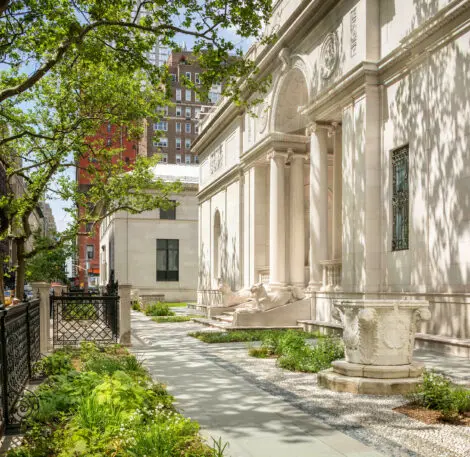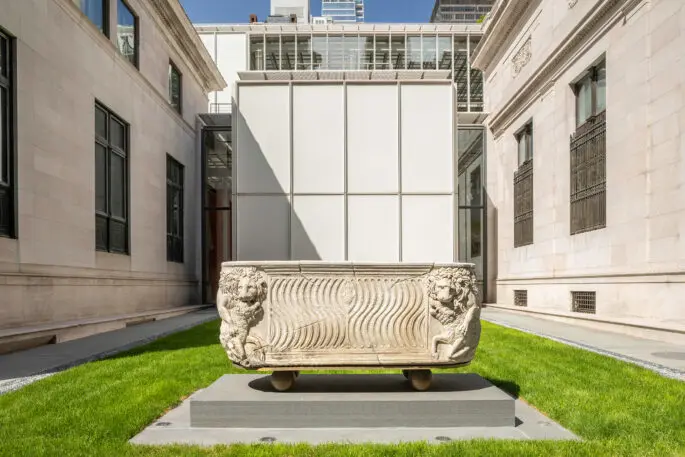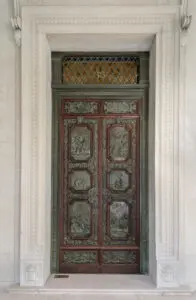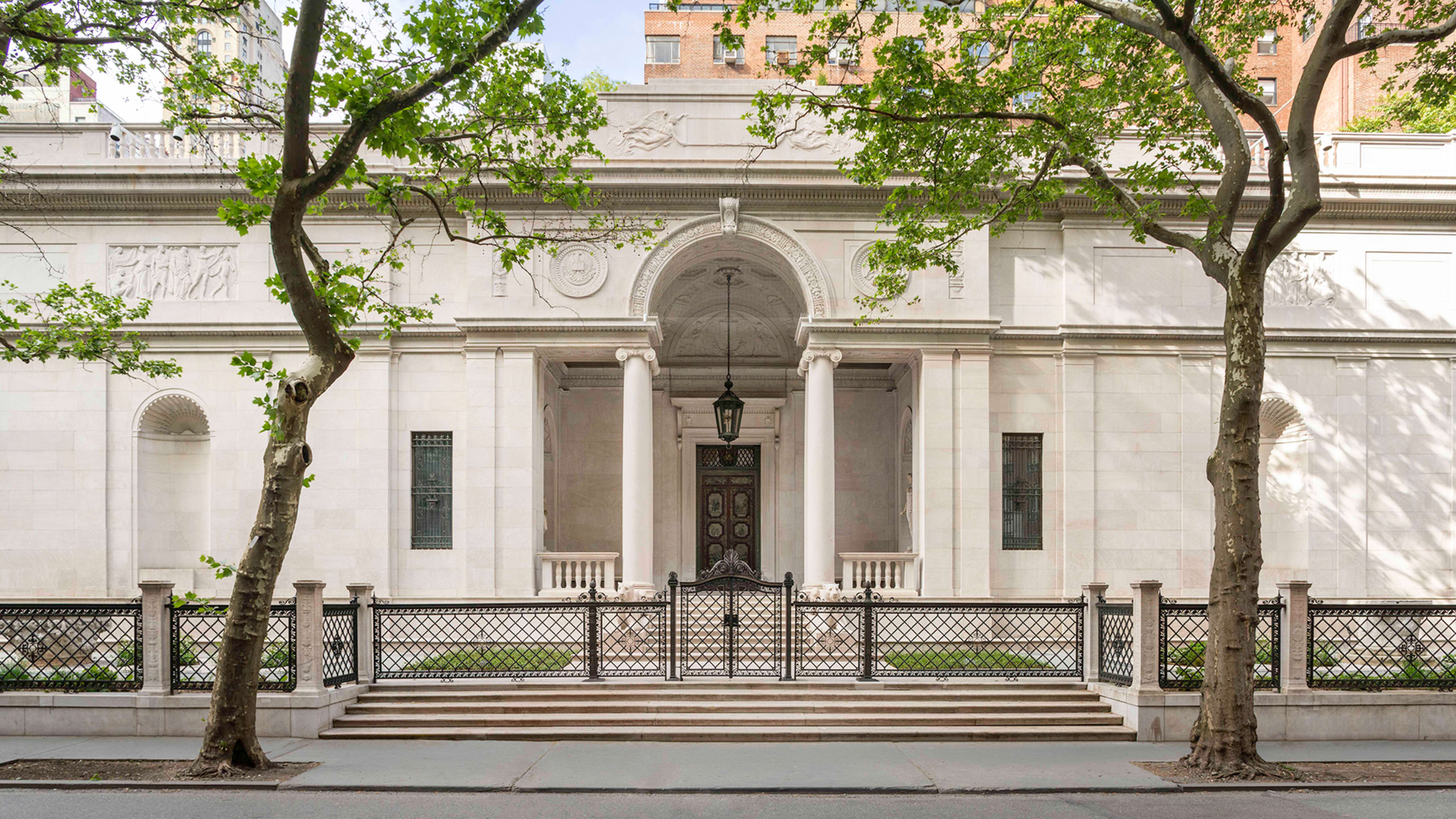In the early years of the 20th century, the Gilded Age financier J.P. Morgan built an opulent library next to his home in Midtown Manhattan to house his collection of rare books and manuscripts. It was designed in an intimidating Neo-Renaissance style by Charles Follet McKim, who modeled it, in part, on the entrance to the Villa Medici in Rome. During Morgan’s lifetime, generally only those who had business to conduct with the ultra-rich financier—and perhaps a few people with scholarly credentials—were granted access to this magnificent private space. An early visitor, writing in the London Times in 1908, called it the “most carefully, jealously guarded treasure-house in the world.”
Over the years, Morgan’s sanctum has gradually been transformed into something more open and approachable. In the 1920s, Morgan’s son turned it into a public institution (now known as the Morgan Library and Museum); more recently, in 2006, the go-to architect for contemporary museums, Renzo Piano, added glass and steel pavilions to connect the historic buildings and create more gallery space. Now, a new makeover, just completed at a cost of $13 million, includes a thorough restoration of the building’s exterior and the addition of a delightful new Greco-Roman garden along East 36th Street.

“I wanted the garden as seen from the road to be very low-key, just as the building facade is quite stern and austere,” says the landscape designer Todd Longstaffe-Gowan, known for his work on major historic estates in the U.K., including Hampton Court Palace and Kensington Palace Gardens. “But when you come through the garden gate, you notice the richness as you negotiate the paths, and you’re anchored by various artifacts as you might be inside the library and the museum.”

“The whole site is almost like an archeological site,” says Longstaffe-Gowan, who used artifacts that were already in the Morgan’s collection and in some cases had been displayed in J.P. Morgan’s private gardens. “In Rome, you see little herbs popping up in the pavement—it’s a stylized version of that. I quite like the notion of antiquities with incidental herbs close by, to make it feel as though things were growing up around them.”
Morgan’s obsession with the ancient world, one shared by his architect McKim, also comes across in the meticulous restoration of the original building’s facade. Made of dry-laid “Tennessee Pink marble” (actually limestone), with no mortar and only a thin layer of lead between the perfectly cut blocks, it was always meant to look impenetrable and monolithic—”like a sculpture,” says Jennifer Schork, a partner at Integrated Conservation Resources and a principal conservator on the project. She notes that McKim adapted his construction technique from the Erechtheion at the Acropolis, which he had seen on his travels, and that he boasted that the resulting surface was so seamless that not even a knife blade could be inserted into the joints.

This area of the building is guarded, not so fiercely, by two lioness sculptures—the work of Edward Clark Potter, who also created the lions that stand outside the New York Public Library a few blocks away. A good cleaning has highlighted the creatures’ playful expressions, as does a photograph from a Morgan family album (on view inside the museum building, in a worthwhile exhibition about the building’s history). In the image, taken sometime between 1910 and 1924, children playing outside the library have placed a flowered hat atop the head of one of the big cats.
The goal of this new renovation, it seems, is to make the Morgan Library seem just as friendly to us. The extravagance of the interior is still overpowering, but a gentler transition from the street has been created. So has a new green space in Midtown Manhattan, always a welcome development, and especially now as this neighborhood of office towers evolves away from its pre-pandemic identity, serving the needs of today’s top 1%.
There is, however, still a cloistered element to the Morgan campus; the public-facing changes to the exterior haven’t entirely done away with the rarefied air of privacy that surrounded the property in Morgan’s day. “I liked the fact that the building sits on a plinth,” says Longstaffe-Gowan. “If you walk by, you might not see much of the garden; but, like the library, it reveals its secrets when you launch yourself into it.”
Recognize your brand’s excellence by applying to this year’s Brands That Matter Awards before the early-rate deadline, May 3.
